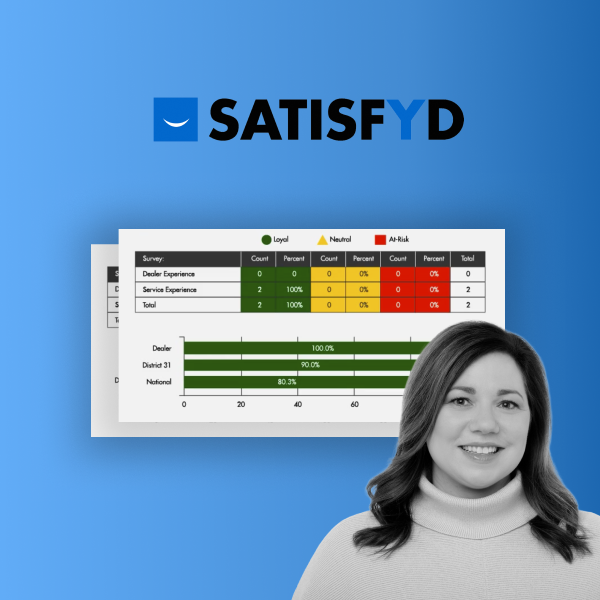In today’s fast-paced, digital-first economy, organizations across industries and geographies are exploring new ways to optimize their business and keep up with the times. The drive to become more data-driven is perhaps the most popular in a recent line of trends related to digital transformation.
And since “data-driven companies are 58% more likely to exceed their revenue goals than their non-data-driven peers,” it’s no surprise that BARC’s most recent Data, BI & Analytics Trend Monitor report found “data-driven culture” to be the #2 business intelligence (BI) trend going into 2022.
What is Data Culture?
At its core, data culture is all about centering your organization around accurate, comprehensive data. It impacts how you manage data collection and analysis, encourages cross-functional teams to use data to inform their daily tasks, and enables executives to create data-driven strategies and growth goals.
Establishing a data culture requires that your employees shift their mindset and decision-making processes: replacing gut feelings with decisions based on data.
The successful adoption of data culture hinges on more than a high-level goal or inspiring mission statement. Instead, it’s rooted in change management at every level of your organization. Unlike machine learning or self-service BI, data culture isn’t a technology implementation or software solution; it’s a core operating principle.
The Value of Data-Driven Company Culture
Developing data culture goes beyond equipping your data scientists with the latest tools or presenting impressive metrics during quarterly board meetings. The benefits of a strong, data-driven culture have a ripple effect across various areas of your business, from your revenue department to your service delivery team.
Here are a few ways data culture adds value to organizations:
-
Real-time data access enables business users to make better decisions and makes their job easier on a daily basis, too. Without data, even the most basic follow-up questions in a meeting or presentation will be unanswerable. Data culture helps your employees access accurate, up-to-date information then it to guide their decisions or look for improvement opportunities.
-
Data democratization goes a step further than real-time access by bringing data into the context of where and how employees already work. It’s all about putting high-value data in the hands of more people, so those people can leverage it effectively and relate its value back to their goals and priorities.
-
A single source of truth helps ensure the investment in developing a data-driven mindset isn’t jeopardized by poor data quality. Unifying data and reporting ensures everyone is working with the same information, rather than running disparate reports that don’t reflect the latest metrics or cross-department insights
-
Informed decision-making increases revenue, cuts hidden costs, and improves productivity. Stakeholders use reports and analyses to inform decision-making, improve forecasting and strategy, and to better understand how data is being used in various departments.
Webinar: How to Automate Workflows Using Webhooks
TARGIT Webhooks help teams automate spreadsheet population, data quality tasks, custom to-do lists, and more.
Find out how these automated tools can help improve productivity and increase BI adoption in your organization.
Developing Data Culture with BI and Analytics
Encouraging your employees to embrace data is the first step toward developing a strong data culture, but your strategy shouldn’t stop at this sentiment. You also need to ensure your teams have the tools, time, and training they need to access and interpret that data effectively.

As you prepare to implement a BI strategy or begin shaping your data-driven culture code, remember that there’s no one-size-fits-all approach to developing data culture.
Think about how data relates to your organization’s mission, vision, and value drivers, as well as the services and solutions you deliver. Then, begin identifying opportunities to leverage data or increase data visibility and work with stakeholders to determine how you’ll communicate your new message to the entire organization.
The key to developing and maintaining a data culture lies in making your end-users excited about data and motivated to use it in their day-to-day tasks.
Start with Stakeholder Buy-in
Truly effective change management follows a top-down adoption strategy. To get your staff on board with data culture, new analytics tools, or refined processes, you need a leadership team who will back up your message and stay accountable for rolling out data-led operating models to their respective departments.
Obtaining Business Buy-in on Data and Analytics Strategies
Discover Gartner’s six-step approach to gaining stakeholder buy-in on data-driven initiatives.
Be sure you articulate operational and strategic benefits associated with becoming data-driven, appealing to high-level business initiatives and your frontline employees alike. Clarifying your message and bringing stakeholders on board before you roll out new processes and solutions increases the likelihood that your teams will embrace data culture and create a united front.
Champion Business User Adoption
If data culture only focuses on enabling your data analysts, it won’t have much of an impact on your organization as a whole. In most cases, existing BI users already possess the technical skills to extract data insights and develop reports. However, these skills reside primarily within the walls of your technology department, which can leave other teams in the dark.
Data culture, and data democratization specifically, is all about breaking down those walls and empowering even the least tech-savvy users to use data and reporting to their advantage.
A user-friendly BI and analytics platform, along with a strong culture of BI adoption, will enable business users to get a clear view of your organization’s data and adjust reports or dashboards to track the metrics that matter most to their core business functions.
Invest In a Scalable Solution
While data culture requires more than a single software implementation, choosing a solution that aligns with your organization’s needs is essential to success.
As you consider your options, be sure your BI and analytics solution balances flexibility and scalability. It should be easy to use and deliver timely ROI, but it should have the capability to grow alongside your business and adapt to your ever-evolving needs.
To strike this balance, you’ll want to develop a rock-solid BI foundation, prioritizing non-negotiable features that support data quality management, data governance, and user experience.
Solutions that feature intuitive custom dashboards, pre-built reporting structures, and embedded analytics functionality are an essential part of getting your data culture off the ground. These tools make BI and analytics far less intimidating. Plus, they work with your teams, not against them, integrating into the tools and platforms they already use on a daily basis.
With a strong foundation in place, you’ll be well-equipped to live out your data culture from day one, adding new integrations, data sources, and custom structures as needed to support your new team of data enthusiasts.
At TARGIT, we believe successful BI practices put the power of data in the hands of all users, not just technical experts or data specialists.
We leverage decades of combined industry experience to walk our customers through every phase of their BI journey, helping them develop a steadfast data-driven culture that empowers their end-users and delivers impactful business outcomes.
In the on-demand webinar, Steps to Creating a Data-Driven Culture, TARGIT Director of Presales Consulting Jared Cornelius explores how to develop a strategic BI roadmap and explains how a solid pre-analytical foundation can help your organization evolve into a full-blown data-driven powerhouse.







